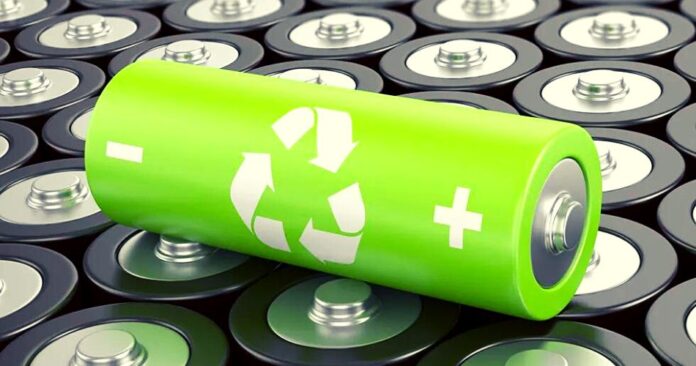How can electric cars batteries be recycled?
We are seeing more and more electric cars on the market now, but lithium-ion batteries mainly used in electric vehicles (EVs) are still not fully recyclable. While electric vehicles are recognized for reducing carbon emissions, especially when powered by renewable energy. However, electric cars don’t use them very often Lead-acid batteries are the most recycled about 99% of the lead from them ends up recycled. There are also issues with recycling facilities taking in batteries and processing them incorrectly may lead to exposure to harmful chemicals and even fire or explosions when not handled correctly. Recyclers are continuously developing further innovations and techniques to process Li-ion batteries that can recover the precious metals in the batteries to repurpose other spare materials.

Gas prices and environmental concerns are strong motivators for people to give up gas and go electric. At the same time, recycling batteries are not cheap, efficient, or quick. The big, heavy batteries present a clear danger to the environment, so recycling batteries properly is the goal in the industry. But by 2040, there could be approximately 200,000 metric tons of lithium-ion batteries that need to be disposed of, recycled, or reused. Can electric car batteries be recycled? Let’s know more about this popular topic further more.

Why is EV battery recycling important?
While electric vehicles emit no greenhouse gases during operation, the manufacturing process can contribute up to 25% of the total global warming emissions in the life cycle of the vehicle. Lithium-ion batteries are the key component in an electric vehicle and the most expensive component of EVs. Electric carmakers are committing to partnerships with recycling companies to reduce waste and alleviate stress on the supply chain, eventually lowering the cost of batteries. On the other hand Recycling, lithium-ion batteries help independency of these materials, improve the security of the supply chain, and minimize environmental harm.

What do they do with old batteries from electric cars?
Most old EV batteries can be used to power manufacturing plants and as storage systems for homes and businesses. Electric vehicle manufacturers are using retired EV batteries to provide backup power to the entertainment center, and outside convenience stores. The batteries will be used to store power generated from solar panels. The energy stored will then be used to support the power of drink fridges, food hot cabinets, and fresh food display chillers inside stores. EV battery’s second stage life can be used as a static battery energy storage system with renewable energy sources that can save on electricity bills and increase the use of clean energy.

What percentage of EV batteries are recyclable?
Cobalt is the only EV battery material worth recycling and among a host of other materials like lithium, manganese, and nickel that cannot be economically recyclable requires additional processing cost. Lithium-ion batteries are more difficult to recycle than the average battery only about 5% of lithium-ion EV batteries get recycled. This is very small compared to the 95% rate at which lead-acid batteries get recycled. The reason why the rate of EV battery recycling is so low is that, compared to lead-acid due to their design. Their entire battery design is different hermetically sealed and contains flammable materials it is a very light and reactive metal.

What is the process of recycling EV lithium batteries?
The lithium battery recycling process is performed one pack at a time first have their glues broken apart to access the individual cells. Most lithium-ion batteries that are recycled today go through a process called “shredding”, where the battery is shredded up into small pieces. Then the cells can either be burned or dissolved in a pool of acid, producing either a lump of charred materials or a slurry of potentially toxic ones. Recyclers extract the valuable cobalt and nickel in batteries, as lithium and graphite are too readily available. Another recycling process can be just recycling a battery’s anode and cathode intact, rather than breaking them down into their component materials.

Are EV batteries considered hazardous waste?
Electric vehicles contribute considerably negative impacts on environmental problems with the lithium-ion waste typically ending up in landfills, where it can potentially leak into the environment. Lithium mining requires a massive great deal of water, which is increasingly in scarcity in many regions of the world. Lithium mining causes water, soil, and air pollution with toxic chemicals like hydrochloric acid can leak from evaporation pools and contaminate the surrounding area. The contamination from cobalt mining resulted in health conditions of people in the local communities, such as birth defects and breathing problems.

What is the cost of recycling lithium batteries?
The cost to break the battery down is similar to lead acid, mostly because the process uses similar equipment, and the operating expenses are comparable to about $100 to $200 per metric ton of the black mass paste. Of this 60%, half is carbon, and the other half is either spent or unspent metal oxides, cobalt, nickel, and manganese, plus miscellaneous pieces of plastic and metal. The amount of copper and aluminum in the battery are quite valuable, get approximately $450 per metric ton for copper and $53 for aluminum. One metric ton of incoming batteries will cost approximately $90 for processing, with black mass selling for about $300 or more and the metallics for about $500.





